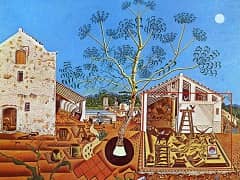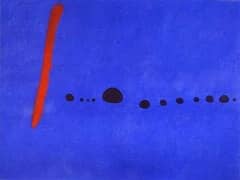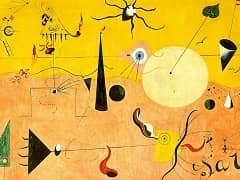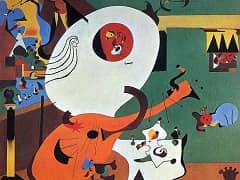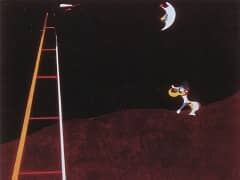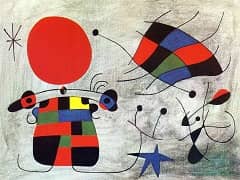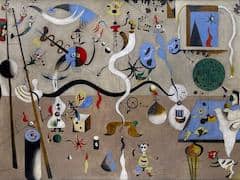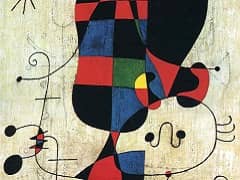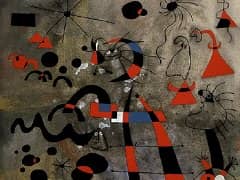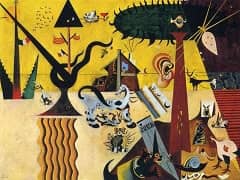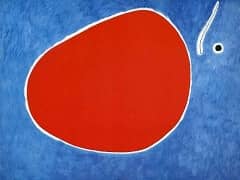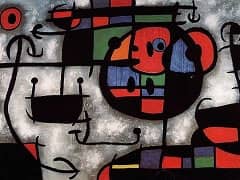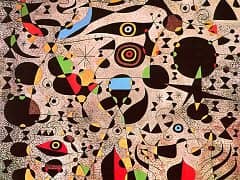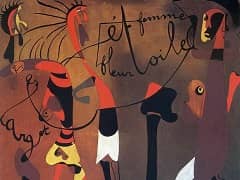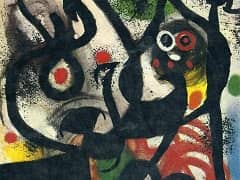Femme III, 1965 by Joan Miro

Femme III, as in his programmatic self-portrait of 1960, Miro puts the emphasis entirely on elementary, swift, sweeping movements. Against a broadly structured surface, with a few more colour spots rubbed into it, he painted a figure consisting of a small number of simple shapes: a red semi-circle at the bottom, linked to a black circle by means of a black line. The black circle is intersected by a broad red line, with a black semi-circle at its top end.
To make the configuration more easily understandable, two black points and a short black line have been inserted into the black circle - rudimentary hints of a face. A yellow circle with a green nucleus pulsates inside the red semi-circle where flesh-and-blood creatures would normally have their heart. However, this figure does not follow anthropological concepts quite so closely. It is more related to a child's matchstick people and also the drawings in pre-historic sign language. What touches us so much is probably this very openness, oscillating between man's early history as an individual and his history as a species. Thus Miro achieved a completely new quality within his symbolic cosmos, far removed from those merely cheerful creatures which he had executed so smoothly in previous years.

